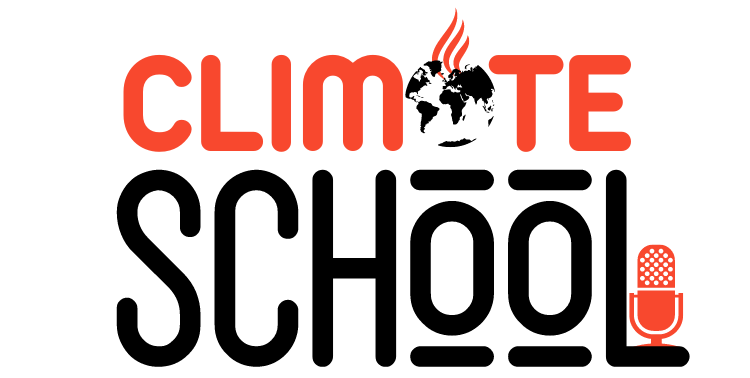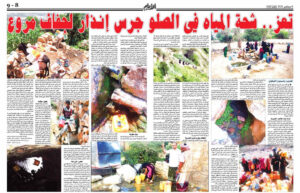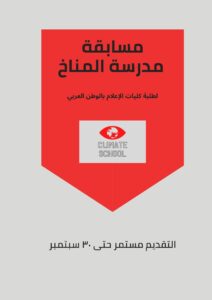Copied from the International Journalists Network website, published on November 6, 2023. You can refer to the original link from here
Preparation: Ahmed Shawqi Al-Attar
The repercussions of the war affect various sectors in conflict areas, and its economic and political effects concern everyone, and top the agendas of local and international governments. But the impact of war on the environment and climate change remains the most marginal, despite its seriousness and the magnitude of its damage.
There is no doubt that the impact of war on the environment and climate is an important story, which journalists can tell in many ways, and from new and unfamiliar aspects, through which they reveal the catastrophic impact of war on nature and humans.
In this comprehensive guide from IJNet, we explore the ideas, angles, sources and tools that can help us produce stories about the catastrophic and dangerous intersection of war and climate.
Emissions tracking
Wars and conflicts increase emissions of greenhouse gases, which cause global warming, into the atmosphere.
Benefit a report Issued by British Conflict and Environment Observatory And 7 other international organizations, titled “Recognition of Military and Conflict-Related Emissions in the Global Assessment,” state that the world’s armies, wars, and conflicts are responsible for 5.5% of greenhouse gas emissions, and the report estimates that just the first seven months of the Russian-Ukrainian war are responsible for 100 million tons of carbon dioxide equivalent. Carbon at least.
Corners for stories
You can investigate and write about carbon-intensive military practices in conflict and crisis areas:
– Destruction of natural carbon stores such as forests and trees.
– Destruction of man-made carbon reservoirs, such as energy infrastructure and oil wells.
– Causing damage to the country’s renewable energy systems. “In Ukraine, 90% of wind power and 50% of solar power capacity have been shut down since the start of the war, according to analysis For Power Technology Foundation.
– Burning and rebuilding cities during and after the conflict.
- Calculating the carbon footprint of armies, or of airplanes, tanks, vehicles, and other heavy engines that consume huge amounts of fossil fuels, the main cause of emissions.
Environmental degradation
War destroys biodiversity, increases pollution and contributes significantly to environmental degradation.
In the case of Ukraine, journalists and activists have documented hundreds of crimes, ecocide, and extensive damage to nature in the country, from attacks on industrial facilities that pollute groundwater supplies to the deliberate bombing of wildlife refuges and other important ecosystems.
Collateral damage of conflict can kill up to 90% large animals in the war zone According to a study published in Nature.
Another study found that Gorongosa National Park in Mozambique was lost 95% of its biological diversity After a long civil war.
All tanks and heavy vehicles that roam in conflicts release abrasive particles, while abandoned munitions leak uranium into water systems, According to CEOBS.
Corners for stories
You can expose environmental crimes of armies in conflict zones, and write stories about them:
– Fires and other modern forestry methods that directly harm wildlife, biodiversity, forest cover, forests and agricultural lands.
– The impact of bombs, missiles, bombings, and fires on forests, species, and wildlife.
– Intentional destruction of ecosystems, forests and species.
– Pollution caused by war, which pollutes water bodies, soil and air, making the areas unsafe to live in.
– Impact on marine ecosystems. “Warships release huge amounts of waste into water bodies, degrading marine and coastal habitats.”
– The use of internationally banned chemical weapons and their impact on the environment. “In the case of Gaza, Israel is using white phosphorus, which is internationally banned, according to Human Rights WatchWhich is carried by the wind to be deposited in the soil or in the depths of rivers and seas and in marine organisms such as fish, which threatens the safety of the environment.”
– Leakage of chemicals into the soil and groundwater in areas where mines and explosives are planted.
This is amazing Story from the New York Times It reveals how the environment has become a “silent victim” of the war in Ukraine.
Climate action disrupted
Wars and conflicts disrupt climate action, exacerbate the shortage of resources associated with climate action, and hinder the ability to develop strategic projects aimed at preserving the environment and meeting the diverse needs of the population at a time when the consequences of climate change are intensifying.
Gaza, for example, is facing major repercussions of climate change, which need to be addressed quickly, so as not to lead to disasters. However, the ongoing war and siege hinder the implementation of any projects to mitigate or adapt to the effects of climate change within the Strip.
For example, the Israeli authorities continue to prevent the entry of “breakwater” rocks from the West Bank into the Strip, which are necessary to prevent coastal erosion resulting from rising waves and sea levels due to climate change, which may increase the risk of catastrophic floods, according to the report. study British.
The inability to upgrade the crumbling infrastructure and deteriorating electrical system will make record heat waves caused by climate change harm basic life and economic activity, and cooling will become difficult to achieve.
Corners for stories
You can investigate, uncover and write about the presence of these practices in conflict areas:
- Adaptation or mitigation projects have stopped due to war, and its impact on the population and nature.
- The size of the economic losses resulting from the disruption of climate action in war and conflict zones.
- Increased fossil fuel consumption due to targeting infrastructure for renewable energy projects.
Global climate action was affected by the war. The issue of climate change is global, and any disturbance in any region may affect the entire world.
reveals this Report from the New York Times How Russia's war in Ukraine undermined global efforts to address the climate crisis.
Intersecting crises
During wars and conflicts, natural resources used to make food, fuel, and raw materials to produce goods are deliberately targeted and destroyed, to harm and weaken the other party to the conflict.
The built environment is also targeted such as roads, buildings and trucks, which are a major part of supply chain systems. Climate change also reduces natural resources.
So wars exacerbate already existing crises caused by climate change, linked to food, energy, water, livelihoods, commodity shortages and disruption of supply chains.
For example, the destruction of energy facilities exacerbates an already existing energy crisis due to climate change, depriving residents of heating or cooling in extreme weather.
Another example: The war in Ukraine exacerbated the food and energy crises throughout the world, not just locally, and in... a report Issued by the United Nations Sustainable Development Group.
Corners for stories
Monitor the crises caused by war and the exacerbation of the effects of climate change on the population:
- Food crises due to the destruction of land and agricultural infrastructure in conflict areas.
- Energy crisis due to oil or energy facilities being deliberately attacked.
– Water crisis due to the destruction of canals, wells, pumps and dams, leading to pollution of rivers or aquifers or water scarcity.
– High commodity prices and inflation due to the war, sparking social unrest.
- Supply chains are disrupted, goods disappear or their prices rise, and inflation increases, due to the destruction of factories, roads, trucks and other means of transportation.
War sometimes exacerbates crises in other areas outside the conflict. Investigate this.
This investigation is from Time Reveals how Russia's war in Ukraine has made heat waves in Asia more deadly.
the health
The impact of war on the climate and environment causes many negative effects on the mental, physical and psychological health of populations within conflict areas. Acknowledge International Committee of the Red Cross Climate change has devastating consequences for people living in conflict situations and those who cannot access basic health care.
War also leads to more toxic dust and chemical waste that pollute the environment, water and food sources, and cause cancer, fatal infections and birth defects. On the other hand, climate change causes droughts, floods, insect epidemics and changing rainfall patterns, which can jeopardize food production. People's means of survival are at risk, and deadly diseases such as malaria, dengue fever, and cholera are spread. Conflicts and wars exacerbate these health risks, because they limit the capacity of health facilities. In Gaza, hospitals were primarily targeted, and what remained of them was occupied by the increasing demand for emergency health aid due to... War, at the expense of other cases. Also in Gaza, pollution caused by the blockade and war has caused the spread of deadly pneumococcal infections, gradually worsening due to the lack of adequate health care.
Corners for stories
You can check the presence of these cases in conflict areas:
- The spread of diseases due to pollution resulting from various types of war practices.
- Increased rates of deaths, injuries, and disabilities resulting from the damage caused by war to the environment.
– The spread of viruses and deadly infections due to contamination of water or food sources.
– Poor health facilities due to the effects of climate change, war, or both.
Displacement and migration
While worsening climate change increases the future risks of violent armed conflicts, wars and conflicts within countries, according to For a study conducted by Stanford UniversityWar and its negative impact on the environment and climate may also lead to increasing waves of migration and displacement. Finding the intersection between war, climate change and migration is somewhat complex, but this can be overcome with further investigation and exploration. As an example: The ongoing war and conflicts in Libya have caused The deterioration of infrastructure in Derna, and the disruption of climate control projects in the city, caused its collapse when it faced this year's catastrophic floods, and the result was the displacement of more than 43,000 people. This is amazing Story from Bnn Bloomberg It reveals the role of war and old dams in leaving Libya vulnerable to storms and floods, which ultimately led to the displacement of the population.
Corners for stories
War may exacerbate climate impacts, such as floods, droughts, and forest fires, as we mentioned, all of which are major causes of migration. Did these effects in conflict areas cause migration or displacement? Check it out.
Did the war cause food or water crises in a region, causing its residents to migrate and be displaced?
Did war practices destroy agricultural lands and cause population migration after losing sources of livelihood?
Did war practices cause the spread of infection or disease that caused the displacement of residents from an area?
Resources and tools
This list of tools and open source will help you as you work on stories related to war and climate change:
Military emissions gab: This open source provides a database of military and military emissions by country, tracks and analyzes military emissions, and collects data reported by governments in one place. Click your country's location on the map to explore its military emissions.
Global Environmental Crime Tracker: A good tool that is constantly being developed, it will help you track different types of international environmental crimes. Through it you can learn about what is happening in places of war and conflicts.
Iom UN migration: A database on the effects of climate shocks on human mobility, migration, and displacement in countries around the world. You can use it to search for migrations in war zones.
weapons-global-guide: This guide for journalists helps you understand and track internationally banned weapons, as well as the treaties and violators. These weapons have serious environmental and health impacts.
MiRCH Tracker: This tool allows you to track military deployments, globally, in response to hurricanes, floods, wildfires, heat waves, and other climate-related disasters. Through it, you can discover the shortcomings and negligence in responding to climate disasters in occupied or conflict-torn areas.
Main photo by: Andre Palmer.





